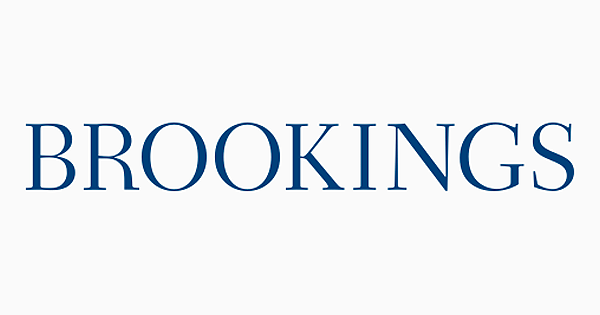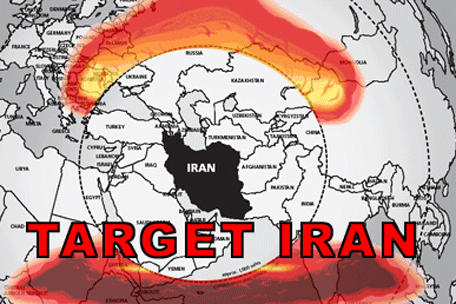
Hillary Rodham Clinton has spent more than twice as much as any other presidential candidate on campaign staff, more than three times as much on office space and millions of dollars more on advertising, according to reports filed this week with the Federal Election Commission.
Three months before the first nominating contest, Mrs. Clinton has built a cash-hungry campaign juggernaut that is more far-flung and more expensive than anything else on the horizon.
The goal is to overwhelm her rivals for the Democratic nomination — including those who are still considering a bid — before the first flowers of spring, and to amass an organizational advantage that no Republican rival will be able to match by Election Day.
Mrs. Clinton’s aides say they have learned their lessons from the 2008 campaign, when she larded her campaign with highly paid consultants and ultimately succumbed to a rival with surprising financial strength and superior organization. This time, they say, Mrs. Clinton was spending heavily to build an unparalleled campaign infrastructure that could quickly morph into a general election machine.
“You can’t just parachute into a state at the last minute and hope to build a campaign overnight,” Mrs. Clinton’s campaign manager, Robby Mook, said in an email. “That’s why we made smart early investments in data, analytics, tech, digital and on-the-ground organizing to build a strong, sturdy campaign designed to fight for and earn every vote in every state.”
But the filings also reveal the size of the gamble Mrs. Clinton is taking. After a record-breaking spring on the fund-raising circuit, her cash intake over the summer barely kept pace with her spending, a reflection of the sheer cost of maintaining the largest campaign infrastructure in either party.
“I think these are very smart investments for them,” said Robert Shrum, a longtime Democratic strategist who advised John Kerry’s 2004 presidential campaign. “But it is premised on one thing: that they can keep up the fund-raising pace.”
Mrs. Clinton has more than $31 million on hand for the primary, a sizable cushion even if her cash flow does not improve in the next quarter. But her financial advantage over her closest rival for the Democratic nomination, Senator Bernie Sanders of Vermont, is quickly evaporating. Mr. Sanders, who has so far focused on building an organization in New Hampshire and Iowa, now appears well positioned to compete against her in both states.
Financed almost entirely by a network of small donors making repeated donations, Mr. Sanders is now moving to build an organization for later contests in states like Nevada, where Mrs. Clinton’s team is already well established.
Reports filed by the Republican campaigns this week present a wealth of warnings about the risks of early spending that is not supported by strong fund-raising. Like Mrs. Clinton, Jeb Bush said he was planning to build for the long haul. Bolstered by a burst of intense fund-raising in early June, his campaign built an expansive operation, with seven field offices and almost 30 paid staff members in Iowa, New Hampshire, South Carolina and Nevada, along with a database with detailed profiles of targeted voters in those states, according to his campaign.
But such an operation is expensive: The Bush campaign reported that it had spent four out of every five dollars it raised in the previous three months, while raising far less than it had earlier.
“Any campaign that is legitimately seeking the presidency must be able to compete with the Democrats,” said Danny Diaz, Mr. Bush’s campaign manager, in a memo the campaign sent to supporters, seeking to explain its spending. “There are very few G.O.P. campaigns committed to building a real infrastructure, and among those we are confident ours is best in class.”

Jeb Bush in Iowa last week. His campaign spent four out of every five dollars it raised in the three months ending Sept. 30. CreditScott Morgan/Reuters
Mr. Bush helped raise more than $100 million earlier in the year for the “Super PAC” backing him, Right to Rise, which in turn subsidized his exploratory expenses and employed staff for his campaign-in-waiting for months. But when Mr. Bush formally entered the presidential race in June — and was required to begin paying campaign expenses with contributions capped at $2,700 — the transition was jarring. Disclosures with the Federal Election Commission show that Mr. Bush was forced to cut salaries for dozens of campaign staff members over the summer after his fund-raising failed to keep pace with spending.
Some candidates did even worse. Gov. Scott Walker of Wisconsin, who formally entered the race in July, dropped out barely two months later, unable to raise enough money to support his campaign, which had a large and well-paid staff: Several senior aides were on track to earn more than $200,000 a year, F.E.C. filings show.
Mr. Bush began the fall with about as much cash on hand for the primary as one of his main rivals, Senator Marco Rubio of Florida. As other Republican candidates experienced, Mr. Rubio’s cash intake collapsed over the summer. His operational costs — including payroll, field consulting, advertising and office expenses — appeared significantly lower than Mr. Bush’s, according to F.E.C. disclosures.
Compounding the difficulties for the Republicans was Donald J. Trump, the real estate mogul and television star, whose command of Twitter and knack for earning free media have allowed him to reach a large audience while spending relatively little.
Mr. Trump has led the Republican field in most polls despite employing only 40 paid staff members, including hiring state directors in Alabama, Florida and Texas since the ending of the last disclosure period. Mr. Trump has spent more on hats and T-shirts — about $678,000 — during the three months ending Sept. 30 than he did on field staff and offices in Iowa, New Hampshire and South Carolina, where those expenses totaled just $353,363, or on advertising, voter list rentals and campaign materials.
“We are a real campaign,” said Corey Lewandowski, Mr. Trump’s campaign manager. “If you look at the models where campaigns staff up and overpay, that model doesn’t seem to work so well, either in past campaigns or in the current one.”
Mrs. Clinton is raising far more for her campaign than any Republican candidate. And she is dominating national polls in the Democratic race, even as the Republicans whom her campaign believes are her likeliest opponents in a general election fall in polls behind Mr. Trump and Ben Carson, a retired neurosurgeon and political novice. Mr. Bush, despite his spending, remains in the single digits in most national polls. Mr. Rubio is not much higher. Other Republican and Democratic candidates, such as former Gov. Martin O’Malley of Maryland, Gov. Chris Christie of New Jersey and Gov. John Kasich of Ohio, are even further behind in polls, fund-raising or both.
Mr. Sanders’s aides decided over the summer to test how much they could raise online. It quickly became clear that the sums would be significant, according to Jeff Weaver, his campaign manager, and Mr. Sanders rapidly expanded his organization. His team had 28 staff members at the end of June, and 132 by the end of September. Now, they believe they are better prepared to keep raising money from their donor base than Mrs. Clinton is with hers.
“We feel like we’re in as good a position as anybody in Iowa, New Hampshire, South Carolina, Nevada,” Mr. Weaver said. “There’s not anybody that has a better case to make than us.”
But while Mrs. Clinton invested in infrastructure early, the F.E.C. filings show, Mr. Sanders only recently sent a few paid staff members to Nevada, and he has no office there. He has yet to spend anything on television ads.
And Mr. Sanders’s organization is far smaller than the one Mr. Obama had built by the same point in 2007, when he was a senator making his first White House run. Mr. Obama had 631 paid staff members by the fall of 2007, more than four times as many as Mr. Sanders has now.
To beat Mrs. Clinton, as Mr. Obama did, Mr. Shrum said, Mr. Sanders will need to grow quickly. “You can’t just do it with social media,” he said. “You’ve got to have people on the ground in those early states.”



Expositores: Oscar Vidarte (PUCP) Fernando González Vigil (Universidad del Pacífico) Inscripciones aquí. Leer más
Una retrospectiva para entender los próximos cuatro años. Leer más
En la conferencia se hará una presentación de los temas más relevantes del proceso de negociación se llevó a cabo desde el 2012, así como del acuerdo de paz firmado entre el Gobierno colombiano y la guerrilla de las FARC a finales del 2016. Se analizarán los desafíos y las... Leer más
El Observatorio de las Relaciones Peruano-Norteamericanas (ORPN) de la Universidad del Pacífico es un programa encargado de analizar y difundir información relevante sobre la situación política, económica y social de Estados Unidos y analizar, desde una perspectiva multidisciplinaria, su efecto en las relaciones bilaterales con el Perú.
© 2025 Universidad del Pacífico - Departamento Académico de Humanidades. Todos los derechos reservados.

